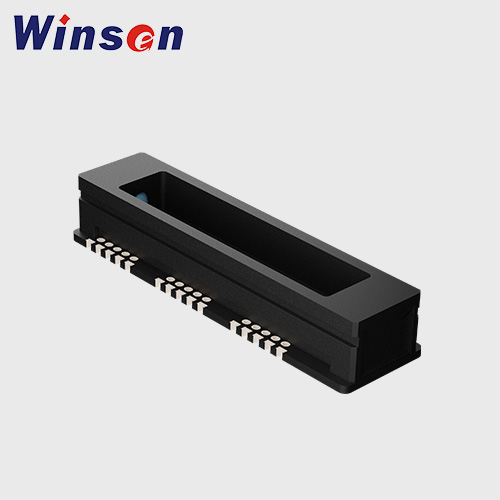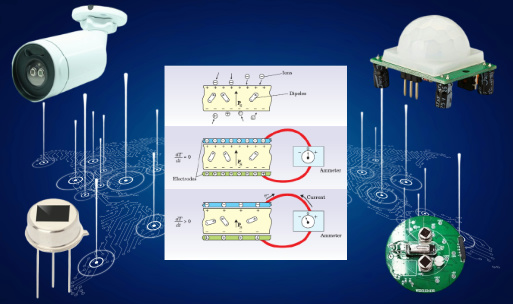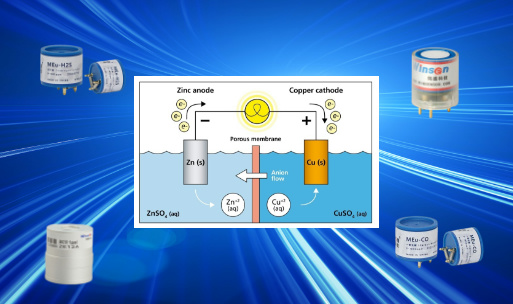What is a TDLAS Methane Sensor, Understanding the Technology and Its Applications
Methane (CH4) is a potent greenhouse gas and a significant component of natural gas. Its detection and monitoring are crucial for environmental protection, industrial safety, and efficient energy production. Tunable Diode Laser Absorption Spectroscopy (TDLAS) is a highly effective technique for detecting and measuring methane concentrations. This article provides an in-depth look at TDLAS methane sensors, covering their principles, components, applications, and benefits.
Principles of TDLAS Methane Sensors
Basic Operating Principle
TDLAS methane sensors operate based on the principle of laser absorption spectroscopy. A tunable diode laser emits light at specific wavelengths corresponding to the absorption lines of methane molecules. When the laser light passes through a gas sample containing methane, the methane molecules absorb part of the light at their characteristic wavelengths. By tuning the laser across these wavelengths and measuring the intensity of the transmitted light, the sensor can determine the methane concentration.
Beer-Lambert Law
The Beer-Lambert law underpins the quantitative measurement of methane concentration. It relates the absorbance (A) to the concentration (c) of the absorbing gas, the path length (L) through which the light travels, and the molar absorptivity (ε):

where:
- ( A ) is the absorbance,
- ( I0) is the initial light intensity,
- ( I ) is the transmitted light intensity,
- ( ε ) is the molar absorptivity,
- ( c ) is the concentration of the gas,
- ( L ) is the path length.
Selectivity and Sensitivity
TDLAS is highly selective and sensitive. The ability to tune the laser precisely to the specific absorption lines of methane ensures that the sensor can distinguish methane from other gases present in the sample. The technique's sensitivity allows for the detection of methane at very low concentrations, often in parts-per-million (ppm) or even parts-per-billion (ppb) levels.
Components of TDLAS Methane Sensors
Tunable Diode Laser
The tunable diode laser is the core component of the TDLAS methane sensor. It emits light that can be precisely tuned to the absorption lines of methane. The laser's wavelength is adjusted by varying the injection current and temperature.
Optical System
The optical system includes lenses, mirrors, and optical fibers that direct the laser beam through the gas sample. This system ensures that the light path is optimized for maximum interaction with the methane molecules.
Gas Cell
The gas cell is a chamber where the gas sample is contained during the measurement process. The design of the gas cell can vary, with some systems using open-path configurations for measuring ambient air and others using closed-path cells for more controlled environments.
Detector
The detector measures the intensity of the transmitted laser light after it has passed through the gas sample. The reduction in light intensity due to absorption by methane is used to calculate the methane concentration.
Data Acquisition and Processing System
This system collects the data from the detector and processes it to determine the methane concentration. Advanced algorithms are used to analyze the absorption spectra, correct for noise and interference, and provide accurate concentration readings.
Applications of TDLAS Methane Sensors
Environmental Monitoring
TDLAS methane sensors are widely used for environmental monitoring, particularly in the detection of methane emissions from various sources, such as:
- Natural Gas Leaks: Detecting leaks in pipelines, storage facilities, and distribution systems to prevent environmental contamination and ensure safety.
- Landfills: Monitoring methane emissions from landfills, which are significant sources of greenhouse gases.
- Agricultural Sources: Measuring methane emissions from livestock and rice paddies to study and mitigate the impact of agriculture on climate change.
Industrial Safety
In industrial settings, TDLAS methane sensors play a crucial role in ensuring safety by detecting and monitoring methane levels:
- Oil and Gas Industry: Monitoring methane emissions during extraction, processing, and transportation to prevent leaks and explosions.
- Chemical Plants: Ensuring safe operation by detecting methane and other flammable gases in chemical processing environments.
Process Control
TDLAS methane sensors are used in various industrial processes to optimize efficiency and reduce emissions:
- Combustion Control: Monitoring methane levels in combustion processes to optimize fuel usage and minimize emissions.
- Biogas Production: Measuring methane concentrations in biogas production facilities to ensure efficient operation and maximize energy output.
Research and Development
Researchers use TDLAS methane sensors to study methane dynamics and its impact on the environment:
- Atmospheric Research: Investigating methane concentrations in the atmosphere to understand its role in climate change and atmospheric chemistry.
- Fundamental Studies: Exploring the molecular spectra and reaction kinetics of methane to advance scientific knowledge.
Winsen MH-Z9041A TDLAS Laser Methane Sensor
MH-Z9041A laser methane gas sensor (hereinafter referred to as the sensor) is a residential use methane sensor, based on tunable laser gas absorption technology (TDLAS) technology to detect methane gas, internal use of cross-beam light path structure, with excellent gas selectivity, no oxygen dependence, water vapor resistance. Anti-poisoning, long life, etc. Built-in temperature control algorithm, temperature compensation algorithm, to achieve accurate measurement of methane gas; With serial port output interface, easy to use. The sensor is a high performance sensor which combines mature laser gas absorption detection technology with stable optical path design and circuit design.

| Target: | Methane CH4 |
| Model: | MH-Z9041A |
| Detection range: | 3-100%LEL (can be customized) |
| Size: | 76.5mmX21mmX14.1mm |
| Output signal: | Serial port (UART) (TTL level 3.0V) |
| Response time: | T90< 15s |
Read More
Advantages of TDLAS Methane Sensors
Refer to: Advantages of TDLAS and Laser Methane, CH4 Sensors
Future Trends and Developments
Miniaturization and Portability
Advances in laser technology and microelectronics are leading to the development of smaller, portable TDLAS methane sensors. These compact devices can be used in field applications, making it easier to monitor methane emissions in remote or hard-to-reach areas.
Integration with IoT and Data Analytics
The integration of TDLAS methane sensors with the Internet of Things (IoT) and advanced data analytics is enhancing their capabilities. Smart sensors connected to cloud platforms can provide continuous monitoring, real-time data analysis, and predictive maintenance. This integration enables more efficient and effective methane management.
Enhanced Sensitivity and Selectivity
Ongoing research is focused on improving the sensitivity and selectivity of TDLAS methane sensors. New laser sources, improved optical components, and advanced signal processing algorithms are being developed to achieve even lower detection limits and better discrimination between methane and other gases.
Multi-Component Detection
Future TDLAS systems are expected to detect multiple gas components simultaneously. By using multiple lasers or broadband tunable lasers, these systems can provide comprehensive gas analysis, enhancing their utility in complex environments.
Conclusion
TDLAS methane sensors represent a significant advancement in gas detection technology. Their high sensitivity, selectivity, fast response time, and robustness make them ideal for a wide range of applications, from environmental monitoring and industrial safety to process control and scientific research. As technology continues to evolve, TDLAS methane sensors are poised to play an even more critical role in addressing the challenges of methane detection and monitoring, contributing to a safer and more sustainable future.







